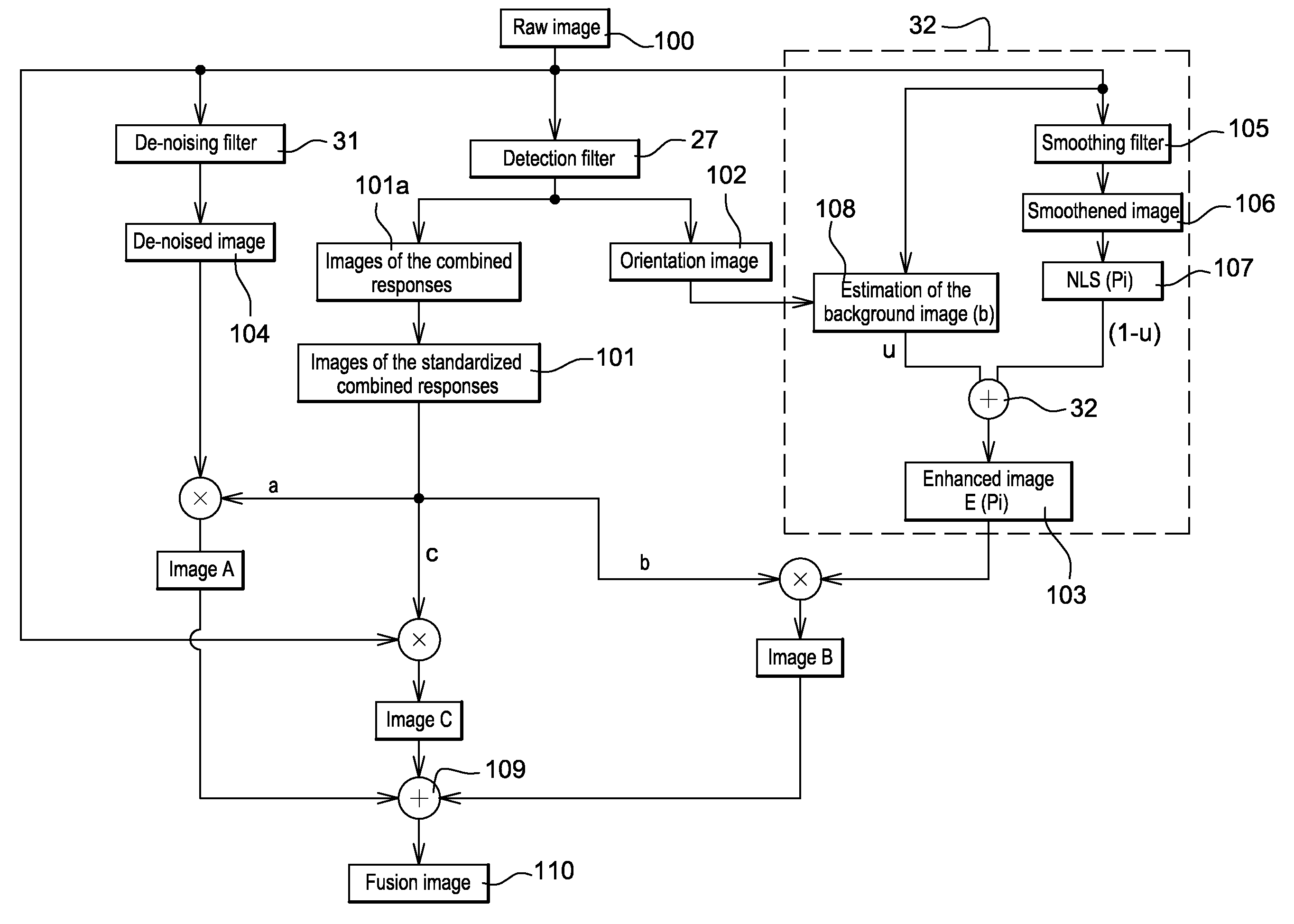Method for the processing of images in interventional radioscopy
a radioscopy and interventional technology, applied in the field of medical imaging, can solve the problems of long recovery and hospitalization time, high cost, and high cost, and achieve the effects of low contrast-to-noise ratio, enhanced false positives, and easy implementation
- Summary
- Abstract
- Description
- Claims
- Application Information
AI Technical Summary
Benefits of technology
Problems solved by technology
Method used
Image
Examples
Embodiment Construction
[0033]In order to make it easier to understand the description of the method of the invention, reference is made to the elements 100 to 110 of FIG. 8 in the description of FIGS. 1 to 7.
[0034]FIG. 1 illustrates a radioscopic image-production apparatus implementing a radioscopic image-processing method according to the invention. Radioscopy is a medical imaging system used to obtain a dynamic radiological image, i.e. a sequence of images or a video of the patient. This tool is used for diagnostics and interventional purposes, i.e. during the treatment of the patient, as an aid in an interventional operation on the patient. Radioscopy is for example used to assist in angiography (diagnostics) or angioplasty (interventional action).
[0035]The images produced by the production apparatus 10 result from detecting an incident irradiation coming from a radiation source 11 to which the patient 13 is exposed. The apparatus 10 also has an image detector 14 and a control circuit 15.
[0036]The imag...
PUM
 Login to View More
Login to View More Abstract
Description
Claims
Application Information
 Login to View More
Login to View More - R&D
- Intellectual Property
- Life Sciences
- Materials
- Tech Scout
- Unparalleled Data Quality
- Higher Quality Content
- 60% Fewer Hallucinations
Browse by: Latest US Patents, China's latest patents, Technical Efficacy Thesaurus, Application Domain, Technology Topic, Popular Technical Reports.
© 2025 PatSnap. All rights reserved.Legal|Privacy policy|Modern Slavery Act Transparency Statement|Sitemap|About US| Contact US: help@patsnap.com



